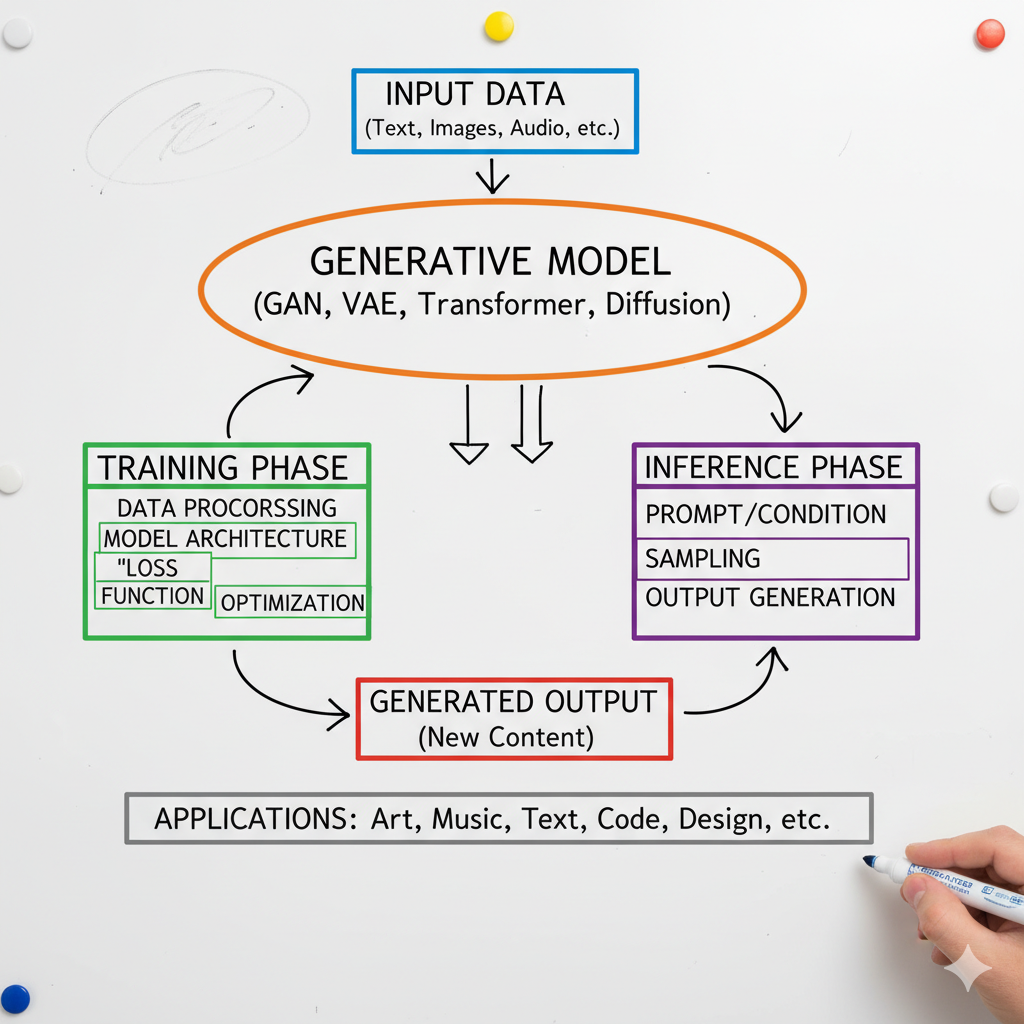Imagine if your computer could write essays, compose music, design graphics, or even code apps for you. Sounds like science fiction? Welcome to the world of generative AI, a technology that can create content in ways previously thought possible only by humans.
What is Generative AI?
Generative AI is a branch of artificial intelligence that can generate new content, including text, images, music, and even videos. Unlike traditional AI, which focuses on analyzing existing data, generative AI creates something entirely new based on patterns it learns from data.
Think of it as teaching a student about poetry, and then the student writes their own poem in a style similar to what they studied. That’s essentially what generative AI does — it “learns” from examples and then produces original outputs.
How Does Generative AI Work?
At the core of generative AI are machine learning models, often based on deep learning. Here’s a simplified breakdown:
- Training Phase:
The AI is fed massive amounts of data — like books, images, or music. It identifies patterns, structures, and relationships. - Generation Phase:
Using these learned patterns, the AI creates new content. For example, GPT (Generative Pre-trained Transformer) can generate realistic text based on a prompt you provide. - Refinement:
Many generative models include mechanisms to improve the output quality, ensuring the generated content makes sense and feels coherent.
Real-World Analogy:
Think of generative AI like a master chef learning thousands of recipes. Once trained, the chef can create entirely new dishes using their knowledge of flavors and techniques.
Types of Generative AI
- Text Generators:
- Example: ChatGPT, Jasper AI
- Use: Writing articles, essays, and even code
- Image Generators:
- Example: DALL·E, MidJourney
- Use: Creating digital art, marketing visuals, concept designs
- Music & Audio Generators:
- Example: AIVA, OpenAI Jukebox
- Use: Composing music, generating podcasts
- Video Generators:
- Example: Runway, Synthesia
- Use: Producing animated videos, deepfakes, and educational content
Why Generative AI Matters
Generative AI is transforming industries. Here’s why it’s so important:
- Creativity on Demand: Students, artists, and developers can generate content faster and more efficiently.
- Personalization: Businesses can create custom marketing campaigns, tailored recommendations, and dynamic content.
- Innovation: It enables experimentation, from fashion design to product prototyping, reducing time and cost.
Challenges and Ethical Considerations
While generative AI is exciting, it comes with challenges:
- Misinformation: AI can generate realistic but false content.
- Bias: AI learns from data, so biased datasets can lead to biased outputs.
- Ownership & Copyright: Who owns AI-generated content? This is still a legal gray area.
As college students exploring AI, it’s crucial to use generative AI responsibly and understand its limitations.
How to Start Learning Generative AI
If you’re curious about generative AI:
- Learn Python and Machine Learning basics.
- Explore AI platforms like OpenAI, Hugging Face, and Runway.
- Experiment with projects like AI chatbots, AI art, or automated writing tools.
- Stay updated with research papers and AI newsletters.
Conclusion
Generative AI is more than a tech trend — it’s a creative partner for the modern world. By understanding how it works, its potential, and its ethical challenges, college students can harness generative AI to innovate and create responsibly.
Whether you aim to become an AI developer, digital artist, or entrepreneur, generative AI is a tool you can’t ignore.
